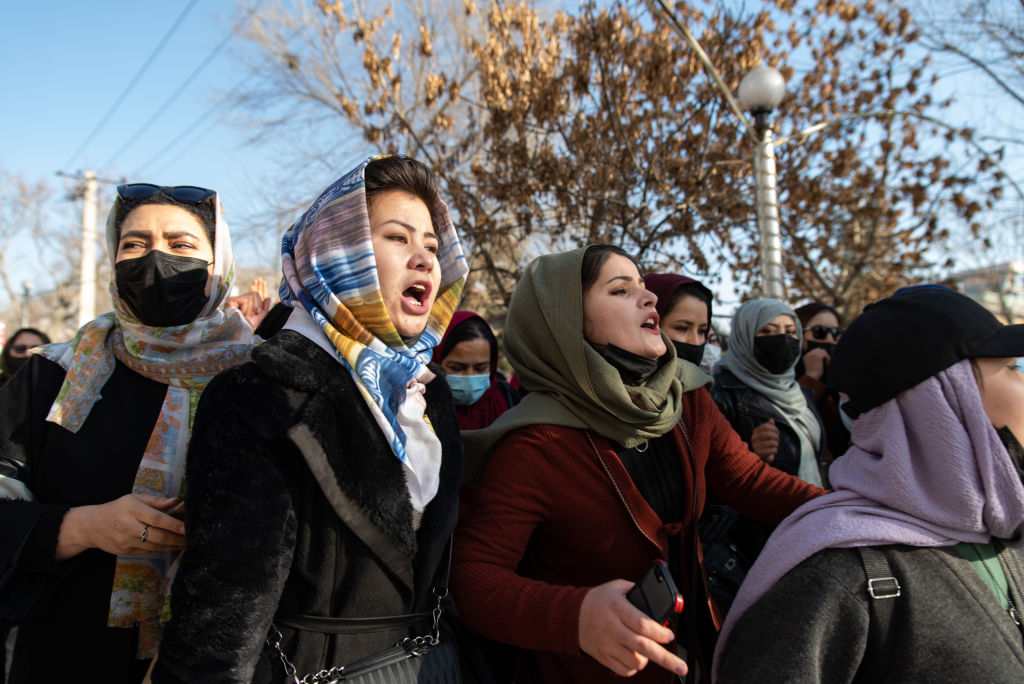
Today, no doubt, there’ll be morning teas with cupcakes in each of the nation’s security agencies to mark International Women’s Day. But how will any of that improve the situation for women, peace and security? The first UN Security Council WPS resolution was passed nearly 25 years ago, and the secretary general has expressed his extreme concern at the backsliding of the agenda. Australia waited years to release of its second National Action Plan (NAP) outlining how all relevant government agencies would implement the now 10 Security Council Resolutions on this topic.
Australia’s National Action Plan on Women, Peace and Security 2021-2031 includes implementing responsibilities for Defence, Home Affairs and the AFP. Coordination responsibility for the NAP lies with the Department of Foreign Affairs and Trade. Each department is supposed to have its own implementation plan but, as a whole, they are expected to provide a progress report every two years. We still have not seen a single progress report on the NAP and there have been major omissions in implementation.
The four key outcomes of the NAP are to:
- Support women and girls’ meaningful participation and needs in conflict prevention and peace processes.
- Reduce sexual and gender-based violence.
- Support resilience, crisis response, and security, law and justice sector efforts to meet the needs and rights of all women and girls.
- Demonstrate leadership and accountability for the Women, Peace and Security agenda.
While there are some strengths to the model of having each department develop its own implementation plan that sits under the NAP, there are also pitfalls. For example, it can mean that the implementation plans can fall further and further away from the intent and issues identified within the resolutions, and that those responsible for implementing the departmental policy then also have less of an understanding of the original resolutions.
Each of the resolutions references the Beijing Platform for Action, the outcome document of the Fourth World Conference for Women held in Beijing in 1995, which continues to be the most progressive document on women’s rights internationally. That document was firmly anti-militarist and called for a reduction in military spending and in the arms trade. That’s why there’s a gender provision in the Arms Trade Treaty which is supposed to prevent the trade in conventional weapons to end users who are responsible for war crimes, crimes against humanity, genocide, or gender-based violence. Australia’s ongoing arms trading in the Middle East should not be allowed under those circumstances.
Resolution 1325 was unique in its recognition that women have unique experiences of conflict and instability, and the Security Council obliged the international community to respond accordingly to bring about effective peace and security. Throughout our region and beyond war widows have remained a prescient issue in peace and security discourse, including in Nepal. In Afghanistan, compensation to families of civilians who died in NATO operations was important to counterinsurgency efforts. But Australia has still not provided the widow of slain Afghan Ali Jan any compensation for the death of her husband, despite the Brereton Report recommending this compensation be provided without being linked to any court proceedings.
One of the principles of the NAP is taking a human rights-based approach to international peace and security. This is the first time the Department of Home Affairs has been included in the NAP. In the most recent machinery of government, Home Affairs lost several parts of the organisation that had implementation responsibility for women, peace and security. However, it has not lost responsibility for immigration.
Human rights defenders have been removed from the groups to be processed with priority for visas from Afghanistan, even though their situation in Afghanistan has deteriorated significantly since the Taliban returned to power in August 2021. Organisations like Azadi-e Zan and Rural Action for Refugees have been unable to maintain earlier contact with the government about visa pathways for women’s rights defenders needing to flee for their lives.
The Security Council resolutions also reinforce the obligations of UN Member States to end impunity for conflict related sexual violence by investigating and prosecuting individuals within their jurisdiction. They reference the Rome Statute of the International Criminal Court as well as the Geneva Conventions.
Australia’s NAP focusses heavily on supporting justice for conflict related sexual violence. But Australian alleged to have committed gendered crimes against Yazidis in Syria and Iraq have not been prosecuted despite the community’s desire for justice. Australia has a strong legislative framework. When sexual violence is perpetrated as part of an armed conflict, it is a war crime. When that violence is widespread or systemic, it is a crime against humanity. When it is used to destroy, in whole or in part, an ethnic, racial or religious group it is genocide.
Sexual violence has been incorporated into Australia’s criminal code as a war crime, crime against humanity and genocide in Division 268. It has also been integrated into Division 270 under the provisions on human trafficking. Each of these provisions has universal jurisdictions and comes with a sentence of 25 years to life depending on the specifics. But instead of implementing this legislation and supporting justice for survivors of conflict related sexual violence, the Australian Government has been implementing policies that stand in the way of prosecution and support for victims of violence perpetrated by Australians who fought with ISIS in Syria and Iraq.
This International Women’s Day, we need to see actions not words. Australia’s security agencies need to do more to implement the UN Security Council resolutions on Women, Peace and Security, and finally report on our second NAP.

